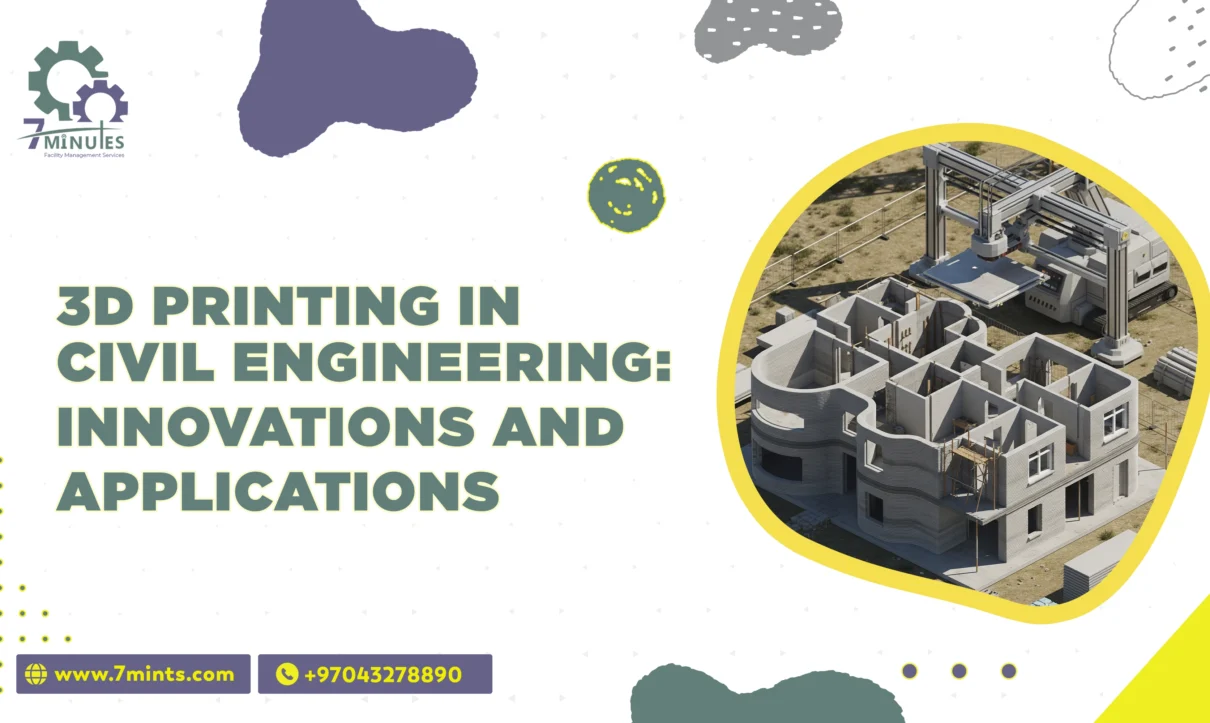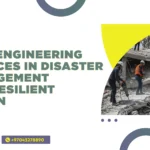3D printing has become a catalyst for change in civil engineering. Candy manufacturing might be the best way to describe the process for engineers who design, erect, and maintain infrastructure. A world of possibilities is being thrown open by the prospect of combining sustainable materials with complex geometries and speeding project delivery, a long-standing challenge for the construction industry. Let us now unravel the recent innovations and uses of 3D printing in civil engineering.
What is 3D Printing in Civil Engineering?
In civil engineering, 3D printing refers to making three-dimensional structures by depositing layers of materials such as concrete, polymers, or composites under the guidance of a digital model. Essentially, the use of 3D printing is an alternative building approach, different from many traditional construction techniques with their use of molds, extensive manual work, and material wastage. Layer-by-layer construction delivers the project with greater speed while simultaneously offering designers freedom of expression to realize their most customized creations.
The technology leverages Computer-aided design (CAD) files to drive the printer, enabling engineers to create extremely complicated designs that are either difficult or impossible to produce through conventional methods. 3D printing has thus become a critical tool with which the modern civil engineer innovates their projects and tries to optimize them.
3D Printing Innovations in Civil Engineering
-
Advanced Materials and Sustainability
Among the greatest innovations of 3D printing is that of new, unconventional, and eco-friendly materials. Whereas traditional construction mainly relies on concrete and steel, whose production has a heavy environmental footprint, 3D printing is appealing to recycled plastics, new concrete formulations, and biodegradable composites. These materials diminish the carbon footprint of construction and further the supply of locally sourced or recycled materials for sustainability.
Engineers are printing an ecomix so that such a concrete mix balances strength and durability with minimal environmental impact. The printing of these types of materials dreams of a new horizon for sustainability infrastructures that could be able to construct resilient and environmentally responsible buildings and bridges.
-
Complex Geometries and Customization
3D printing brings complex and customized structures within reach, which by traditional methods would prove exorbitantly expensive and challenging to realize. Printing layer by layer, engineers can design lattice structures, organic shapes, and optimized forms that have the best strength-to-material ratio. This is particularly useful for architectural designs in actualizing artistic visions and efficient structural solutions.
Customization is no longer a luxury; using 3D printing, parts can be produced on demand, customized for the specific requirements of each project. This flexibility is changing the way engineers approach civil engineering projects, both on a small and large scale.
-
Integration with Robotics and Artificial Intelligence
The future aspect of 3D printing in civil engineering is in its integration with robotics and AI. The automated robotic arms and Artificial Intelligence undertakings may bring about further precision, real-time quality control assurance, and optimization of both printing processes for efficiency and safety. Hence, the combination of such technologies is helping pave the way for fully automated construction sites, minimizing human intervention while maximizing production.
Thus, in extension, robotics widens the scope of 3D printing for larger and more complicated projects like skyscrapers, bridges, and stadiums. At some point, with the maturing of these technologies, the construction industry would become nimble, responsive, and innovative. Check out our latest blog post on Sustainable Construction Materials: Green Solutions for the Future.
3D Printing and Its Applications in Civil Engineering
-
Residential Houses.
3D-printed houses are no longer the stuff of futuristic MUNRO. They are under construction around the globe to curb the housing shortage and affordability. Using large-scale printers, houses can be constructed faster and at a cheaper price, thus furnishing hard-wearing and customizable options for both urban and rural areas. The technology is most advantageous wherever conventional construction flows slowly or is highly expensive.
-
Commercial and Industrial Buildings
Office spaces, retail shops, and industrial facilities are increasingly being put to 3D printing for rapid construction and customized designs. These enable printing of complex components to place innovative architectural features and use space efficiently. Design and rapid construction work reduce the time of business disruption, maximizing speed to deliver the project.
-
Infrastructure Projects: Bridges and Roads
3D printing is actively opening new avenues in infrastructure, especially for assembling bridges, viaducts, and road components. The projects exploit the fact of this technology to turn out highly specialized structures that have longevity with minimal wastage of materials. The MX3D Bridge in Amsterdam is an important instance: robotic arms were used to print a complex metal lattice structure, while road segments have been erected at great speed employing advanced concrete mixes.
-
Disaster Relief and Emergency Shelters
In the wake of disasters, speed and efficiency matter the most. 3D printing offers a fast solution to erect temporary or permanent shelters using materials that are available nearby. On-site printing of structures affords roughly instant measures of safe and durable accommodation for displaced populations.
Sustainability and Environmental Impact
3D printing stands as a source of power for sustainability enhancement within the civil engineering field. Being a technology that cuts down the environmental footprint of construction projects, it limits material waste through the accuracy of deposition. Usage of recycled or biodegradable materials further favors ecology and thus contributes to the global climate change mitigation effort.
Time is of the essence in rapid printing of structures with minimal energy input and labor, thus making it a low-carbon-emission construction process and one that is very much in agreement with the agenda for green buildings.
Challenges and Future Trends
Though the promise that 3D printing industries hold for civil engineering is immense, other challenges still need to be confronted. The regulatory frameworks and building codes have yet to evolve with the technology, thus placing restrictions on the wider use. Also, concerns regarding the long-term durability and structural integrity of 3D-printed buildings insist on appropriate further research and real-life implementations.
Conclusion
3D printing, while introducing an entirely new age in civil engineering, is working toward solutions to some of the biggest problems in the industry. From giving life to sustainable materials and complex geometries to creating infrastructure swiftly and economically, the technology is on the way to redefining what is possible. Contact us as the regulatory frameworks catch up and technology matures, 3D printing will become a larger part of civil engineering and will shape tomorrow’s skyline and communities.










1 Comment
Comments are closed.